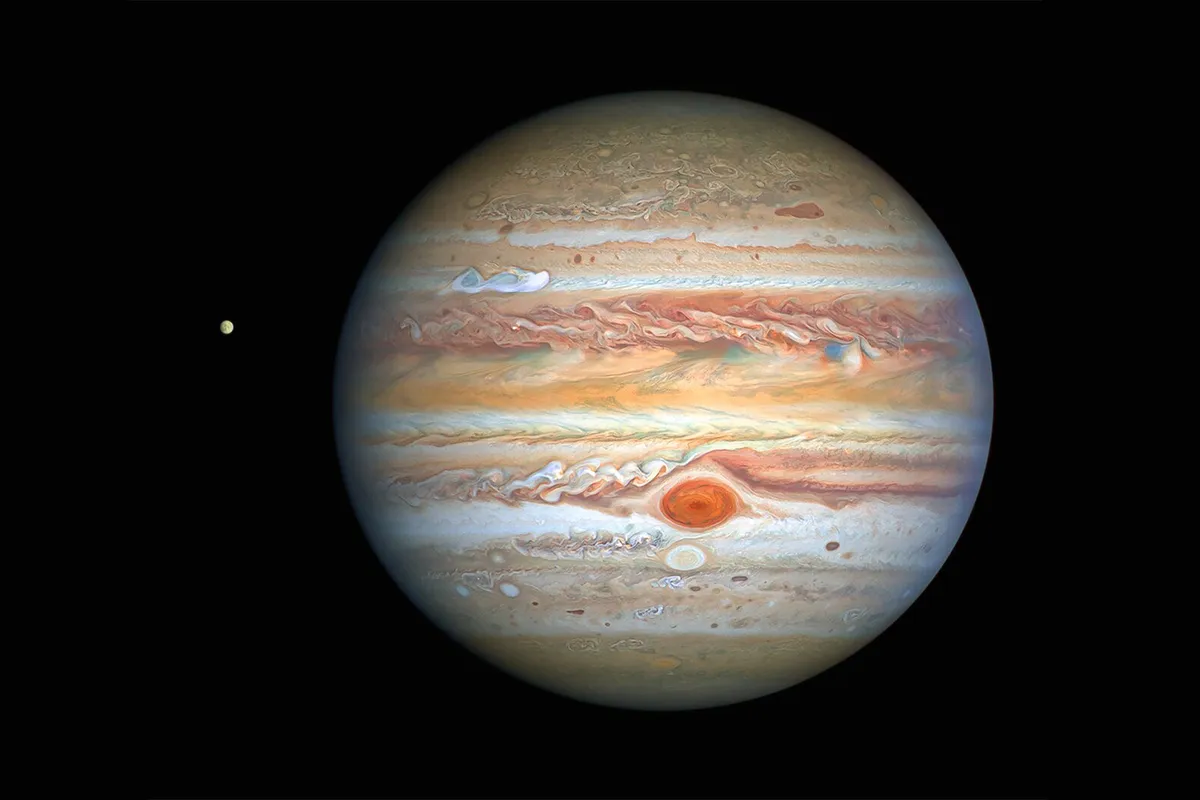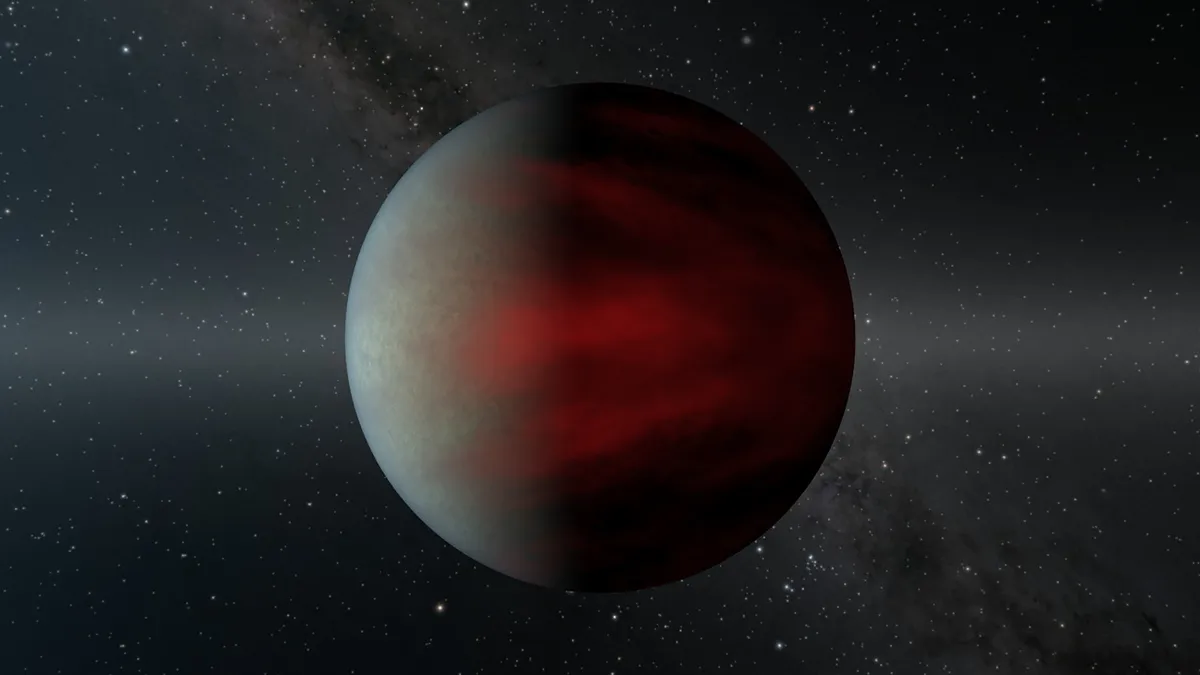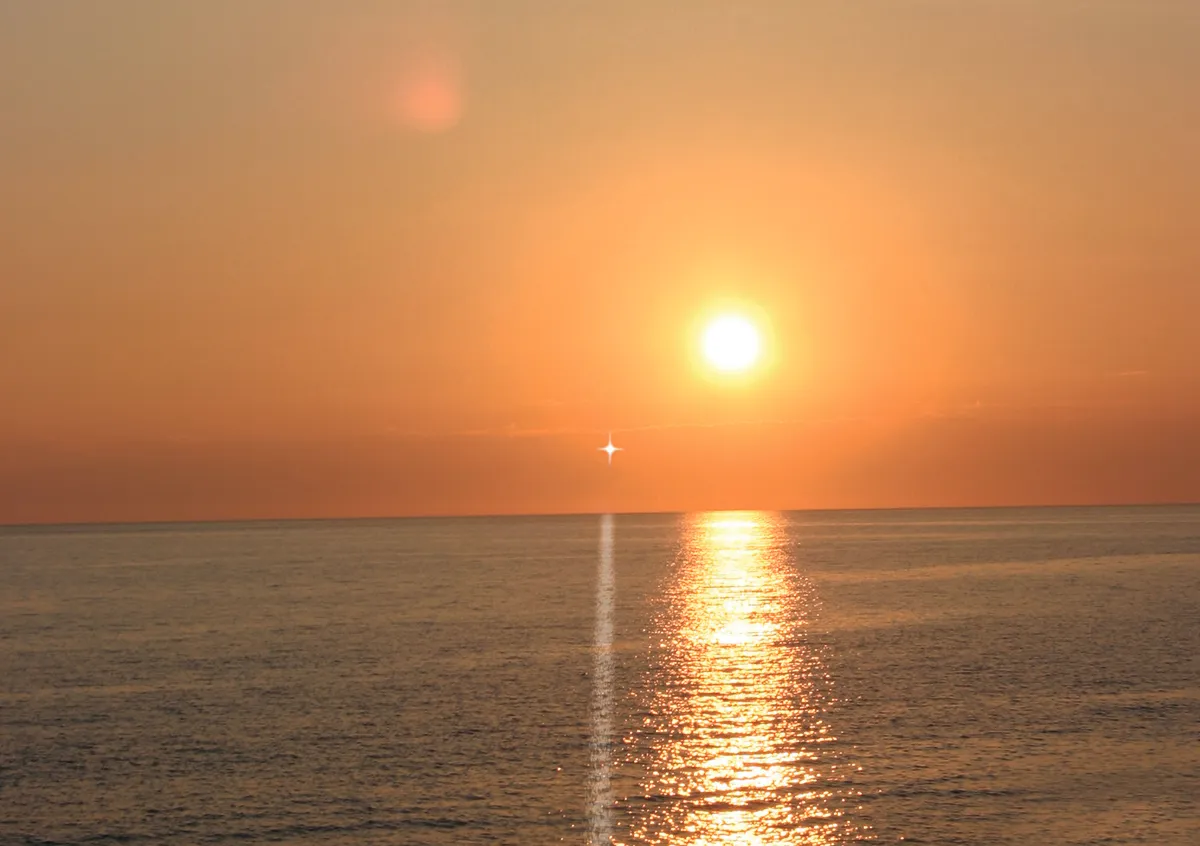Jupiter is the giant of our Solar System. It is a massive gas planet with twirling, swirling storms and a huge Great Red Spot.
Its orbit lies 5.2 astronomical units (AU) from the Sun, where 1 AU is the average distance between Earth and the Sun. That's around 780 million km away.
But what if Jupiter were much closer to the Sun than it currently is today?

As astronomers learn more about planets beyond our Solar System - known as exoplanets - the more they learn just how unlike our Solar System other planetary systems are.
Our Solar System is arranged with the smaller, rocky planets closer to the Sun, while the huge gas giants are further out.
Before the explosion of exoplanet study that has occurred over the past two decades or so, we had good reason to predict that this arrangement might be common around other stars.
But it's become clear that this is by no means the case. Many distant stars have gas giants orbiting much closer to them, and these are known as hot Jupiters.

Our Solar System doesn't have a hot Jupiter, but what if it did?
Venus was known to ancient astronomers as the morning or evening star. Its orbit is tighter than Earth’s and so Venus is never far from the Sun in the sky.
The planet’s highly reflective clouds cause it to shine like a beacon at dawn and dusk.
If our Solar System had a ‘hot Jupiter’ – a large gaseous, Jupiter-like planet found in orbit very close to its parent star– it would appear as the ultimate morning star.
If Jupiter moved to an orbit 0.1AU (15 million km) from the Sun it would be seven times closer to the Sun in the sky than Venus and 15 times brighter.
It would be spectacular at dawn or dusk, and especially during a solar eclipse when the Sun’s glare is hidden.

But could Earth exist alongside a hot Jupiter?
Jovian planets can’t form in tight orbits around a star because they need large rocky and icy cores to drag in great swathes of gas to form.
This gas is found further away from the star when the planets are forming, so gas giants must be born in the outer planetary system and later migrate into tighter orbits.
With a giant marauding through the inner system a young, habitable planet like the Earth, would be in serious danger
This article originally appeared in the September 2009 issue of BBC Sky at Night Magazine.

